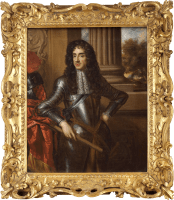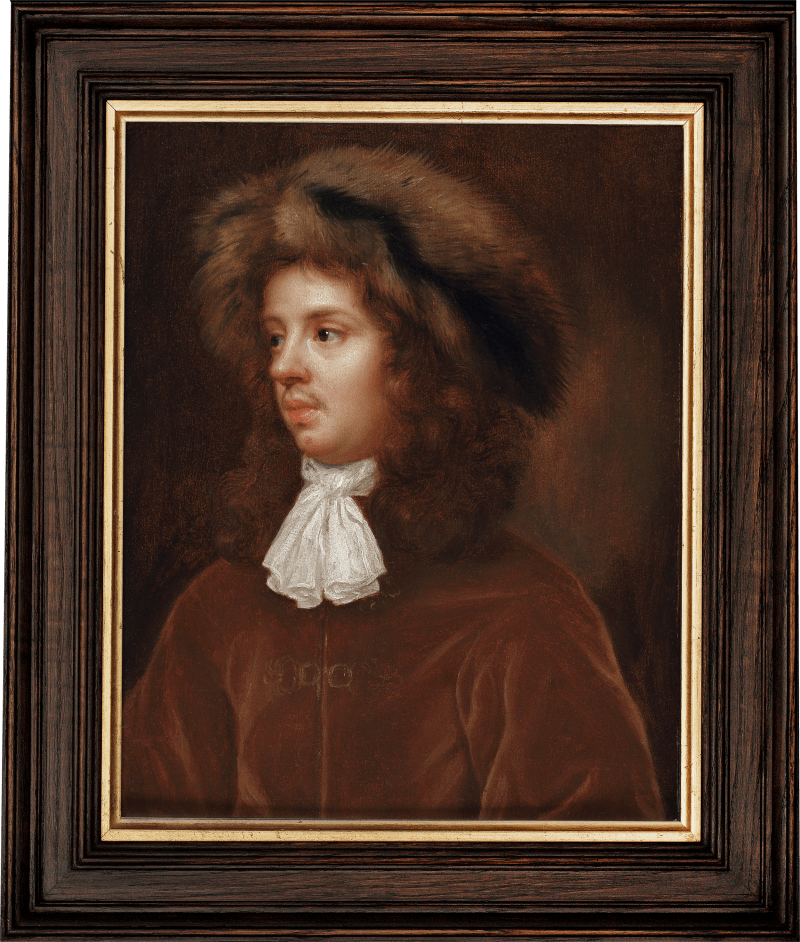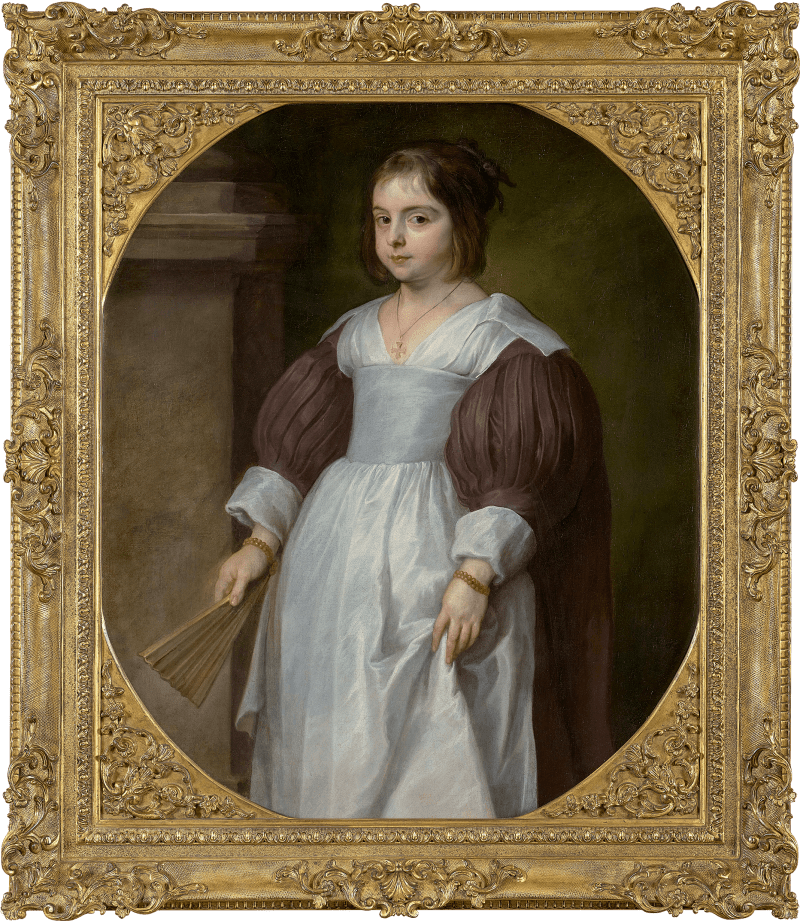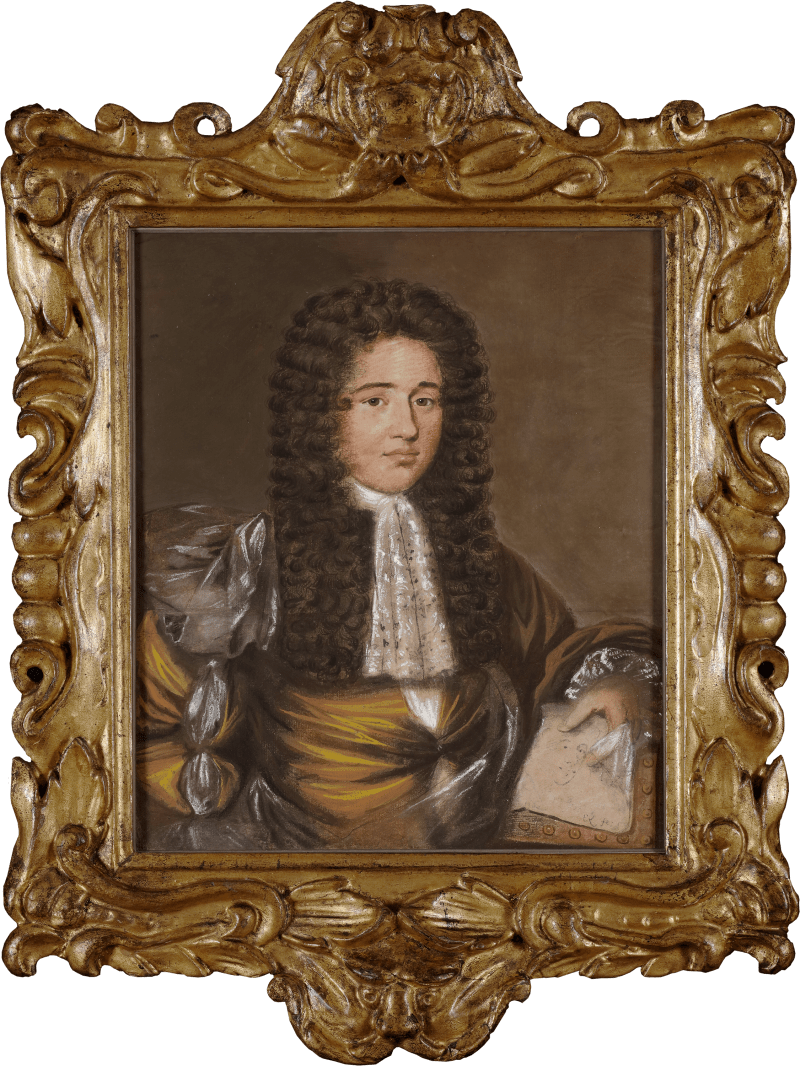This portrait of King Charles II in armour was painted by Beale after a portrait type by her friend and contemporary Sir Peter Lely. Beale’s small-scale portraits after Lely are not only a testament to her industrious studio practice but evidence of the strong personal bond between her and the king’s ‘Principal Painter’.
Lely’s portrait type of Charles II is known through several versions after the artist and his studio [fig. 1].[1] In this ‘in little’ work, Beale reproduces the painting on a smaller scale with ease and demonstrates a degree of versatility possessed by few portraitists of the period. The result is a work of distinct quality and tonal subtlety.
Beale and Lely maintained a strong friendship, which enabled Beale to visit Lely at his studio to watch him at work. This unprecedented access to London’s most sought-after portrait painter had a lasting impact on Beale’s own studio practice. She dedicated significant effort to producing these small-format works,...
This portrait of King Charles II in armour was painted by Beale after a portrait type by her friend and contemporary Sir Peter Lely. Beale’s small-scale portraits after Lely are not only a testament to her industrious studio practice but evidence of the strong personal bond between her and the king’s ‘Principal Painter’.
Lely’s portrait type of Charles II is known through several versions after the artist and his studio [fig. 1].[1] In this ‘in little’ work, Beale reproduces the painting on a smaller scale with ease and demonstrates a degree of versatility possessed by few portraitists of the period. The result is a work of distinct quality and tonal subtlety.
Beale and Lely maintained a strong friendship, which enabled Beale to visit Lely at his studio to watch him at work. This unprecedented access to London’s most sought-after portrait painter had a lasting impact on Beale’s own studio practice. She dedicated significant effort to producing these small-format works, which she referred to as her works ‘in little’, painting both original compositions and copies of Lely’s portraits. The ‘in little’ works were sometimes commissioned by Lely’s sitters and were probably intended as gifts for family members or close friends. According to the Beale specialist and conservator Dr Helen Draper, ‘the value in observing Lely’s technique was not that it taught her how to paint, but that it equipped her to better construct the many variations on and copies of his work she produced in her own commercial practice’.[2] This particular branch of her practice provided an additional stream of financial revenue, aiding her overall studio income.
Beale was not afforded the luxury of royal patronage, nor did she receive the protection afforded by a salary, unlike Lely who received an annual pension of £200 as the king’s court painter.[3] Paintings of the king after Lely, such as the present work, were the closest that Beale would get to painting portraits of royalty.
[1] For example, Studio of Sir Peter Lely, King Charles II, private collection (previously with Philip Mould & Company); after Sir Peter Lely, King Charles II, National Trust, NT 1514021.
[2] Draper 2020, p.64.
[3] Ibid., p.214.











